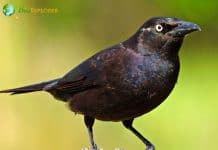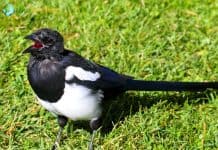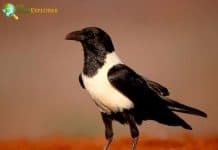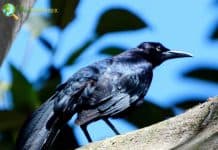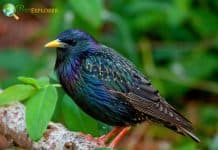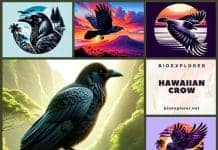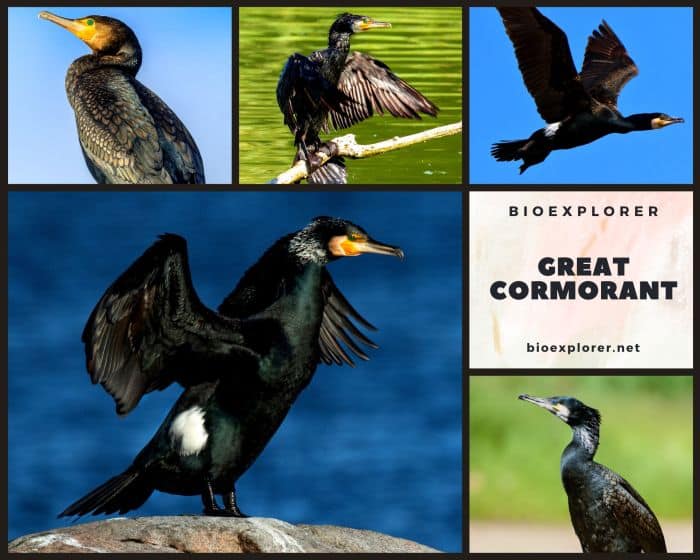
The Great Cormorant has a stunning appearance that is almost primal. It almost has a reptile appearance due to its long neck. This bird excels at fishing. Resting and grooming take up much of the day, and they spend much less time foraging.
Table of Contents
Great Cormorant Physical Characteristics
A large seabird with a blocky head, long, thick neck, and a big, hooked bill.
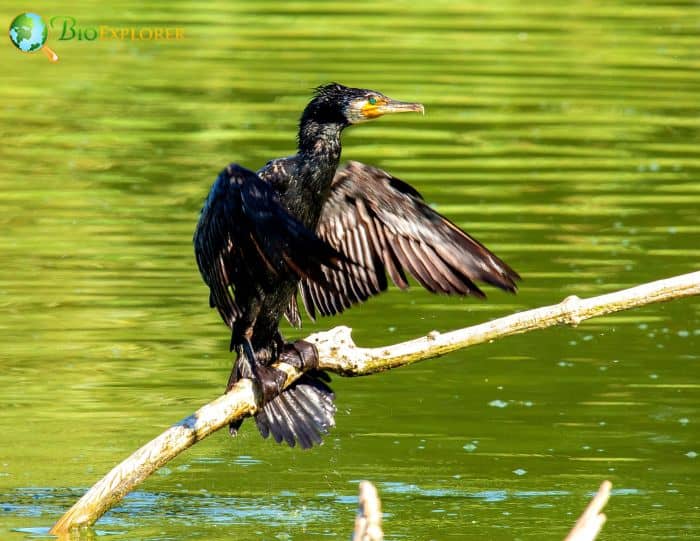
- The wings are large, the tail is rather long, and the legs are short.
- Adults have a generally blackish color, a white throat, and yellowish skin near their bills.
- When breeding, adults have white neck feathers and a square white patch on their thighs.
- Young birds have a pale throat, a brownish belly, and some brownish streaking around the borders[1].
Great Cormorants are great at fishing
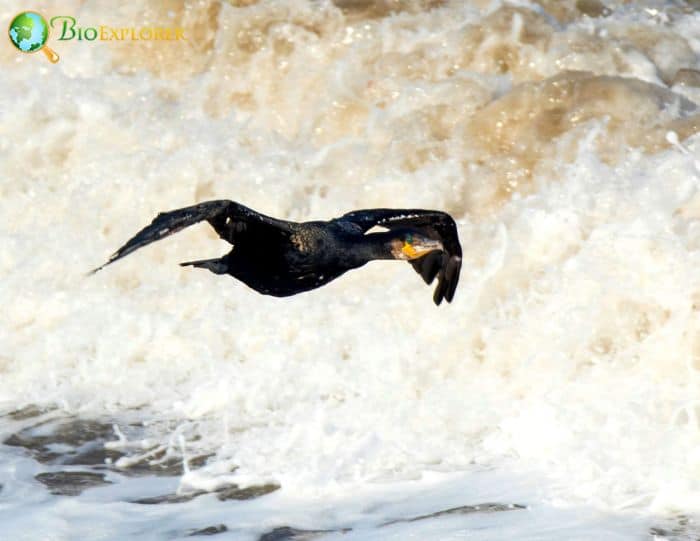
Cormorants have long been employed by fishermen. To prevent the birds from ingesting larger fish that they would catch, fishermen in 5th-century China[2], Japan and 16th-century Europe put loosely fitting tied rings around the birds’ necks.
Great Cormorants Comb Their Feathers
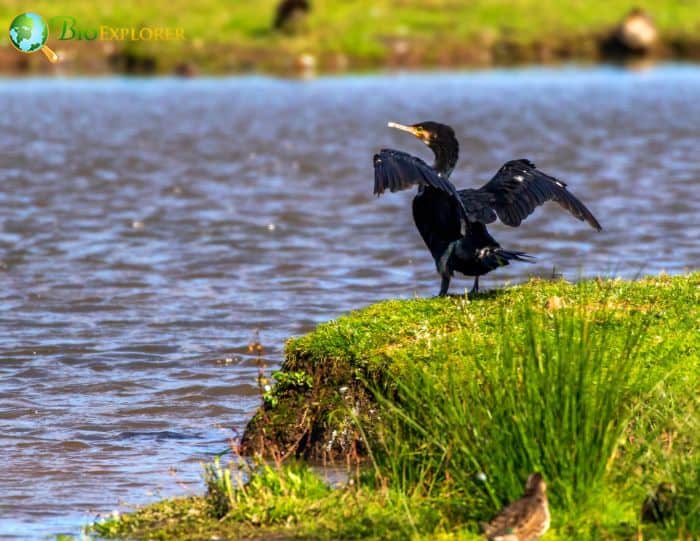
The middle toe claw of the Great Cormorant is serrated, much like a comb. It is believed that birds utilize this to groom their feathers.
Great Cormorants Put On Weight For Diving
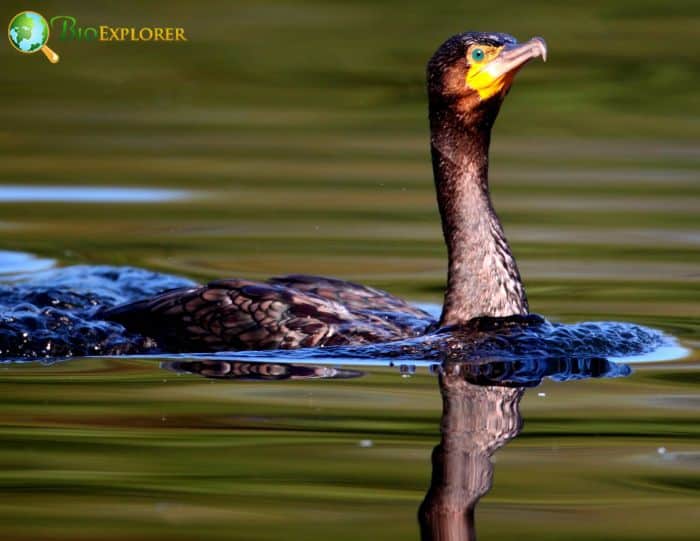
To dive more easily, great cormorants have been observed eating tiny pebbles[3], which they regurgitate after feeding.
Great Cormorants Are Talented Swimmers
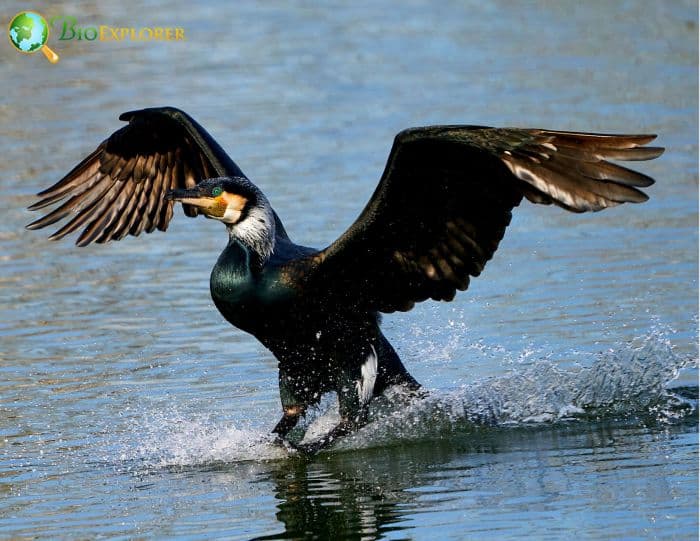
Although they appear awkward on the ground, great cormorants are quick and agile swimmers. An individual will lie on its tarsals with its neck in a relaxed S-shaped kink[4].
Great Cormorants Have Many Names
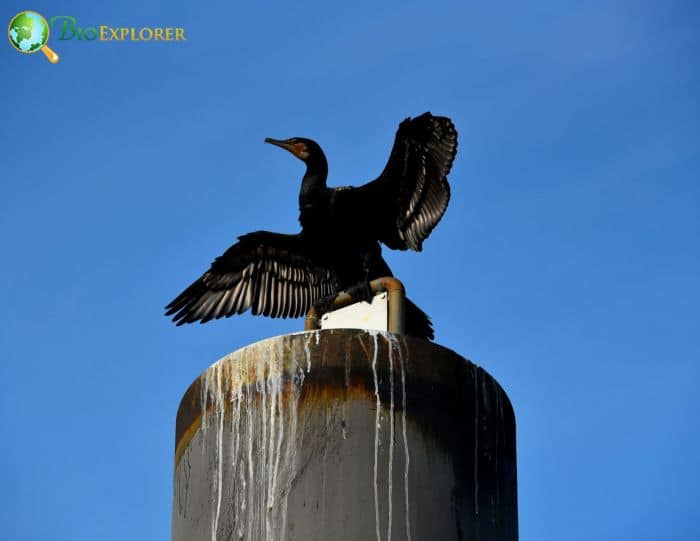
The Great Cormorant, also known as the Great Black Cormorant across the Northern Hemisphere, is known as the Black Cormorant in Australia, Black Shag in New Zealand, and the Large Cormorant in India.
What Do Great Cormorants Eat?
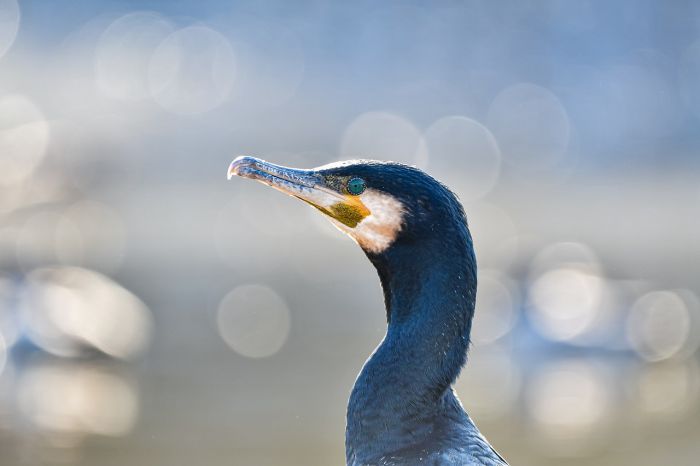
As the Great Cormorant’s diet has been extensively studied by researchers, we have a clear insight into their dietary patterns. Here are the extensive food resources that the Great Cormorant relies on[¶]:
- Dwarf Bream (Pharyngochromis acuticeps).
- Nile Mouthbreeder (Oreochromis niloticus).
- Carpa Común (Cyprinus carpio).
- Cichlidés (Cichlidae)
- Brown Trout (Salmo trutta).
- Roach (Rutilus rutilus)
- Groundling (Barbatula barbatula)
- Épinoches (Gasterosteidae)
- Salmonids (Salmonidae)
- Percas (Percidae)
- Rainbow Trout (Oncorhynchus mykiss).
- Atlantic Herring (Clupea harengus).
- Blackback (Pseudopleuronectes americanus)
- Carbonero (Pollachius virens)
- Atlantic Cod (Gadus morhua).
- Chaboisseau À Épines Courtes (Myoxocephalus scorpius).
- Cods (Gadiformes)
- Chaboisseau À Dix-Huit Épines (Myoxocephalus octodecemspinosus).
- American Dab (Hippoglossoides platessoides).
- Cunner (Tautogolabrus adspersus)
- Éperlan Arc-En-Ciel (Osmerus mordax).
- Loquette D’amérique (Zoarces americanus).
- Bullheads (Cottidae)
- Gobie À Taches Noires (Neogobius melanostomus).
- Carassin (Carassius auratus)
- Turbot (Scophthalmus maximus)
- European Sprat (Sprattus sprattus).
- Vimba Bream (Vimba vimba).
- Tanche (Tinca tinca)
- Common Bream (Abramis brama).
- Smelt (Osmerus eperlanus)
- Burbot (Lota lota)
- Pikeperch (Sander lucioperca)
- Lesser Sand Eel (Ammodytes tobianus).
- White Bream (Blicca bjoerkna).
- Pearl Roach (Scardinius erythrophthalmus).
- Viviporous Blenny (Zoarces viviparus).
- Ide (Leuciscus idus)
- Eurasian Perch (Perca fluviatilis).
- Blacktail (Gymnocephalus cernuus)
- European Flounder (Platichthys flesus).
- Gudgeon (Gobio gobio)
- Sichel (Pelecus cultratus)
- Chordates (Chordata)
- Bighead Carp (Hypophthalmichthys nobilis).
- Sheatfish (Silurus glanis)
- Grand Brochet (Esox lucius).
- Carpa Herbívora (Ctenopharyngodon idella).
- Topmouth Gudgeon (Pseudorasbora parva).
- Grey Mullets (Mugilidae)
- Black Mullet (Mugil cephalus).
- Thinlipped Mullet (Liza ramado).
- Leaping Grey Mullet (Liza saliens).
- European Seabass (Dicentrarchus labrax).
- Black Sea Silverside (Atherina boyeri).
- Thicklip Mullet (Chelon labrosus).
- Gobies (Gobiidae)
- European Pilchard (Sardina pilchardus).
- Chub (Squalius cephalus)
- Prespa Roach (Rutilus prespensis).
- Dover Sole (Solea solea).
- Black Goby (Gobius niger).
- Red Mullet (Mullus surmuletus).
- Annular Seabream (Diplodus annularis).
- Mediterranean Horse Mackerel (Trachurus mediterraneus).
- Bleak (Alburnus alburnus)
- Round Sardinella (Sardinella aurita).
- Crapet-Soleil (Lepomis gibbosus)
- Striped Seabream (Lithognathus mormyrus).
- Bogue (Boops boops)
- Lettered Perch (Serranus scriba).
- European Barracuda (Sphyraena sphyraena).
- Saddled Seabream (Oblada melanura).
- Peacock Blenny (Salaria pavo).
- Horse Mackerel (Trachurus trachurus).
- Crucian Carps (Carassius)
- Achigan À Grande Bouche (Micropterus salmoides).
- Bagre Torito Negro (Ameiurus melas).
- Dace (Leuciscus leuciscus)
- Barbel (Barbus barbus)
- Crucian Carp (Carassius carassius).
- Common Eel (Anguilla anguilla).
- Barbotte Brune (Ameiurus nebulosus).
- Bullhead (Cottus gobio)
- Nase (Chondrostoma nasus)
- Carpas (Cyprinidae)
- Whitefishes (Coregonus)
- Ayu (Plecoglossus altivelis)
- Bluegill (Lepomis macrochirus)
- Biwa Gudgeon (Biwia zezera).
- Japanese White Crucian Carp (Carassius cuvieri).
- Biwa Moroko Gudgeon (Gnathopogon caerulescens).
- Lançons (Ammodytidae)
- Dab (Limanda limanda)
- European Plaice (Pleuronectes platessa).
- Dabs (Pleuronectidae)
- Freckled Goby (Pomatoschistus minutus).
- Grosse Poule De Mer (Cyclopterus lumpus).
- Fifteenspine Stickleback (Spinachia spinachia).
- Alaskan Stickleback (Gasterosteus aculeatus).
- Chaboisseau À Quatre Cornes (Myoxocephalus quadricornis).
- Aloses (Clupeidae)
- Rock Gunnel (Pholis gunnellus).
- Gilt-Head Seabream (Sparus aurata).
- European John Dory (Zeus faber).
- Saurels (Trachurus)
- Bluntsnouted Mullet (Mullus barbatus).
- Golden Mullet (Liza aurata).
- Seaweed Pipefishes (Syngnathus)


